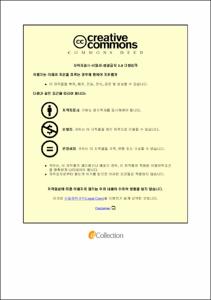신문화운동시기 북경대학 학생잡지 『신조(新潮)』에 나타난 신도덕
- Alternative Title
- New Morality in Student's Journal 『The Renaissance(新潮)』 in Peking University during the New Culture Movement Period
- Abstract
- 본고에서는 신도덕이 무술변법시기부터 일관되게 논의되어 온 주제이며 신문화운동시기에는 당시의 슬로건이었던 과학과 민주에 못지않은 중요성을 지닌다고 보았다. 따라서 본 논문에서는 신문화운동시기의 신도덕 중 특히 당시 사회 변혁의 주체로 주목받던 청년들의 신도덕을 살펴봤다. 이에 따라 북경대학에서 발간된 학생잡지 『신조(新潮)』를 연구 대상으로 선정하고 분석했다.
학생들의 신도덕에 관한 논의는 크게 3가지로 분류할 수 있었다. 첫 번째는 인생관과 인생 문제다. 학생들은 기존의 인생관을 중국의 도덕인 윤상주의로 규정했다. 개인은 이러한 인생관에서 벗어나 자유로운 발전을 추구해야 하며, 현대 사회에 맞는 인생관을 정립해야 한다고 주장했다.
두 번째는 가족제도 비판과 여성해방 주장이다. 학생들은 가정은 개성 발휘를 저지하는 장소이자 노예교육을 세습하는 공간으로 보았다. 또한 가족제도 하의 아들과 딸, 며느리는 기성세대에 의해 희생되었다고 여겼다. 그러므로 개인은 자유롭게 발전하기 위해 가정에서 해방되어야 한다고 주장했다. 여성해방의 제창에서는 가족제도 속에서 인격을 상실한 딸과 며느리의 고통을 폭로했다. 그리고 사회·정치·경제 방면에서 여성해방의 필요성을 밝히고 구체적인 방안을 제시했다.
세 번째는 신도덕과 민주주의다. 학생들은 도덕을 정의하고 신도덕의 기준을 제시했다. 그들은 도덕을 이해하기 위해 수학의 방정식을 활용하는 등 추상적인 도덕의 개념을 구체적으로 접근했다. 그리고 신도덕의 정신으로 박애와 자유주의를 주장했는데, 특히 자유는 『신조』에서 현재 세계의 추세로 지목한 민주주의와 밀접한 관련이 있다.
위의 분석을 통해 도출해낸 『신조』 신도덕의 의미는 다음과 같다. 첫 번째로 학생들은 지식을 실천했다. 5·4운동에 참여하여 군중교육과 문화운동의 필요성을 느끼고, 이론을 내세우는 것보다 실제 문제를 직시하고 해결하는 것이 중요하다는 것을 깨달았다. 실제로 학생들은 잡지 지면상에서 도덕과 관련한 이론을 주장하기보다 현실에서 일어나는 문제들에 주목하고 해결방안을 제시하는 경향을 보였다. 또한 북경대학평민교육강연단(北京大學平民敎育講演團)의 참여를 통해 평민들에게 도덕과 관련한 주제로 강연을 했다.
두 번째로 신문화운동시기 『신청년(新靑年)』의 인물들과 『신조』 학생들의 도덕 서술에 관점의 차이가 있다는 것을 발견했다. 『신청년』의 인물들은 지도자 혹은 부모의 입장에서 의견을 제시하고 청년들에게 행동을 권했다. 반면 『신조』의 학생들은 자녀의 입장에서 문제점을 제시하고 직면한 문제들을 스스로가 해결해나가야 한다고 보았다.
마지막으로 『신조』의 신도덕 주장은 자유로 일관되어 있었다. 학생들은 민주주의를 세계적인 추세로 보고 민주주의 요소 중 하나인 자유를 강조했다. 이는 당시 5·4운동 이후 『신청년』이 마르크스주의를 주목하고 활발히 소개한 것과는 다른 노선이다.
New Morality has been a constantly discussed subject since the time of Wu Xu Bian Fa and is considered having the same and comparable importance as the slogan, ‘Science and Democracy’ in the New Cultural Movement. This thesis investigated closely the New Morality of Youth, the main protagonists of social change at that time, among the new morality in the New Culture Movement. To grasp it, the student magazine 『The Renaissance(新潮)』, published by Peking University, was selected and mainly analyzed as one of the research subjects.
The discussion about the New Morality of students is largely divided into three categories. Firstly, one is the view of life and the issues about life. The students defined pre-existing China's view of life as ‘The Three Fundamental Bonds and Five Constant Virtues(三綱五常)’ which had long been regarded as original Chinese morality. They insisted that individuals pursue their own free development against the very view of life and try to establish the new one for the contemporary society at that time.
Secondly, they criticized the family system and insisted on women's liberation. Students believed that many sons, daughters and daughters-in-law under the system were sacrificed by the older generation. Therefore, they strongly argued that individuals be liberated from their homes. To actualize women's liberation, they revealed the women's sufferings from each home and informed the need for their liberation in the aspects of society, politics, and economy, suggesting specific plans and solutions.
The third is the New Morality and democracy. Students have viewed philanthropy and liberty as the spirit of the New Morality. Of them, freedom is closely related to democracy, which they saw as the current world trend in 『The Renaissance』.
The meaning of the New Morality derived from the above analysis is as follows. First, the students practiced their knowledge. Through the experience of the May 4 Movement, students tended to pay attention to the real-life issues and offer solutions rather than asserted moral theories on the magazine's pages. They also attended ‘Beijing University Commoners' Education Lecture Society(北京大學平民敎育講演團)’ and gave speeches to remind of moral subjects to ordinary people.
Secondly, during the New Culture Movement, it was found that there were differences in views between the moral statements of 『New Youth(新靑年)』 and 『The Renaissance』. The members of the 『New Youth』 presented their opinions from the point of view of the leaders or parents, encouraging young people to act. On the other hand, the students in the 『The Renaissance』 thought that people should state problems from children's point of view and deal with the problems which they faced on their own.
Finally, New Morality in 『The Renaissance』 was consistent with freedom. Students considered democracy a global trend and emphasized freedom, one of the elements of democracy. Compared to introducing the Marxism in 『New Youth』 after the May Fourth Movement, this was a greatly different path, showing the characteristics of 『The Renaissance』 as the student magazine.
- Issued Date
- 2019
- Awarded Date
- 2019. 2
- Type
- Dissertation
- Publisher
- 부경대학교
- Alternative Author(s)
- Jayoung Son
- Affiliation
- 부경대학교 대학원
- Department
- 대학원 사학과
- Advisor
- 조세현
- Table Of Contents
- 1. 머리말 1
1.1. 문제제기 1
1.2. 선행연구와 연구방법 3
2. 신문화운동시기의 북경대학(北京大學) 11
2.1. 북경대학의 개혁 11
2.2. 신조사의 성립과 『신조(新潮)』 19
3. 『신조』에 나타난 학생들의 신도덕 35
3.1. 인생관과 인생 문제 35
3.2. 가족제도 비판과 여성해방 주장 54
3.3. 신도덕과 민주주의 96
4. 『신조』 신도덕의 특징과 의미 126
4.1. 지식 실천 126
4.2. 관점 차이 144
4.3. 자유와 민주 147
5. 맺음말 150
참고문헌 154
- Degree
- Master
- Files in This Item:
-
-
Download
 신문화운동시기 북경대학 학생잡지 『신조(新潮)』에 나타난 신도덕.pdf
기타 데이터 / 1.35 MB / Adobe PDF
신문화운동시기 북경대학 학생잡지 『신조(新潮)』에 나타난 신도덕.pdf
기타 데이터 / 1.35 MB / Adobe PDF
-
Items in Repository are protected by copyright, with all rights reserved, unless otherwise indicated.